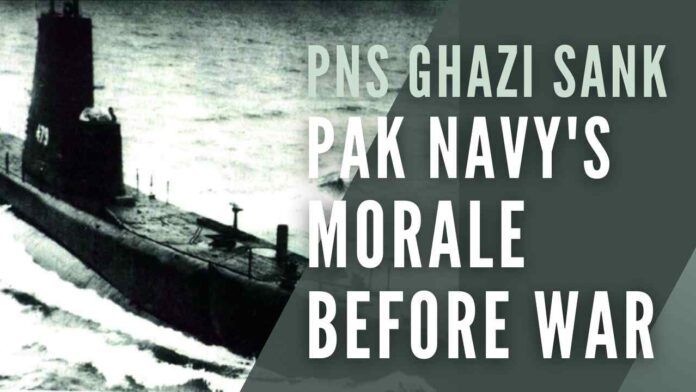
The saga of the Pakistani Navy’s failure
India officially went into war with Pakistan, after its air force struck our airfields in Amritsar, Pathankot, Srinagar, Avantipur, Utterlai, Jodhpur, Ambala, and Agra.
The India-Pakistan War of 1971 was a military confrontation between India and Pakistan that occurred during the Bangladesh Liberation War in East Pakistan from 3 December 1971 to the fall of Dhaka on 16 December 1971.
Pakistan not only struck our airfields using their airforce, but they also used their submarine, PNS Ghazi, to prowl on India’s eastern coast in the last week of November 1971. PNS Ghazi was targeted towards India’s aircraft carrier, INS Vikrant.
The 1971 war was the first time that the Indian Navy was put into action.
The Pakistani submarine Ghazi came quietly off the coast of India in the Bay of Bengal to hunt down and destroy the INS Vikrant, the Indian Navy’s only aircraft carrier.
PNS Ghazi waited for about 5-10 miles off the mouth of the Visakhapatnam harbour, armed with torpedoes and mines, for INS Vikrant.
On November 13, two weeks before the Ghazi arrived at the mouth of Visakhapatnam, the Vikrant, with its complement of Seahawks, Alizes, and Alouettes, left Chennai (then Madras) for the Andaman and Nicobar Islands with the rest of the recently formed Eastern Fleet.
This was a calculated strategic move to counter Pakistan’s attempt to attack the Vikrant. So, while the Vikrant and the Eastern Fleet worked themselves up in the Andaman, Ghazi awaited its unexpected fate off the Visakhapatnam harbour.
The Indian Navy was certain that PNS Ghazi was anywhere between Madras and Visakhapatnam with the intention to attack INS Vikrant as soon as the hostilities broke out.
INS Rajput was sailed out to mislead PNS Ghazi. INS Rajput returned to Visakhapatnam harbour for fuelling. After topping up supplies, INS Rajput left the Visakhapatnam harbour. While doing so, a sudden disturbance was observed in the water.
On the intervening night of December 3 and 4, 1971, a very loud explosion was heard by the coastal battery deployed near Vishakhapatnam Naval Harbour at 12:15 am. The intensity of the explosion was such that the window panes of the houses half a mile away from the coast got cracked. In the morning, some fishermen reported oil patches and some flotsam just off the harbour. And the word went around that it was PNS Ghazi that exploded and sank.
Various causes of the sinking of the PNS Ghazi were presumed, but the cause most widely believed and officially recorded was that Ghazi was destroyed and sunk by the depth charge fired at it by INS Rajput commanded by Lieutenant Commander Inder Singh Malik.
The following day, military divers located Ghazi buried into the seafloor at 99 feet deep—her torpedo compartment blown wide open. The submarine’s periscope was still raised and her bow was pointed toward Visakhapatnam. Over subsequent days, diving teams entered the ship and recovered intelligence including war logs, communications, and (later) a clock suggestively frozen at a quarter past twelve.
For successfully conducting a near-suicidal mission and destroying the most modern submarine, Lt Cdr Inder Singh Malik was awarded the Vir Chakra.
[With Inputs from IANS]
PGurus is now on Telegram. Click here to join our channel and stay updated with all the latest news and views
For all the latest updates, download PGurus App.
- ED grills AAP legislator Amanatullah Khan in Delhi Waqf Board case - April 18, 2024
- DRDO successfully flight tests indigenous cruise missile - April 18, 2024
- ED attaches assets worth over Rs.97 cr of Raj Kundra, Shilpa Shetty in Bitcoin scam case - April 18, 2024










